Ditapis dengan
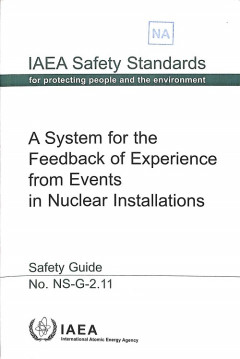
A System for the Feedback of Experience from Events in Nuclear Installations
This Safety Guide provides recommendations on all the main components of operating experience feedback systems, utilizing relevant information on events and abnormal conditions that have occurred at nuclear installations around the world. It focuses on the interaction between the different systems for using operating experience feedback and constitutes an update and an extension of Part I: A Na…
- Edisi
- -
- ISBN/ISSN
- 9201014066 / 1020525X
- Deskripsi Fisik
- 61 p. : Illus. ; 24 cm
- Judul Seri
- Safety Standards Series No. NS-G-2.11
- No. Panggil
- 621.483 IAE A
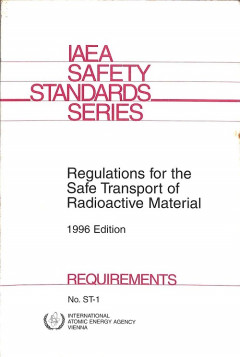
Regulations for the Safe Transport of Radioactive Materials, 1996 Edition, Re…
This publication, Safety Standards Series No. TS-R-1, is an updated version of Safety Standards Series No. ST-1, which was a revised version of Safety Series No. 6 superseding all previous edition. It also includes the revision of Safety Series No. 80, Schedules of Requirements for the Transport of Specified Types of Radioactive Material Consignments (As Amended in 1990). These Regulations, fir…
- Edisi
- -
- ISBN/ISSN
- -
- Deskripsi Fisik
- - p. : illus. ; 21 cm
- Judul Seri
- Safety Standards Series No. ST-1
- No. Panggil
- 615.8406 IAE R
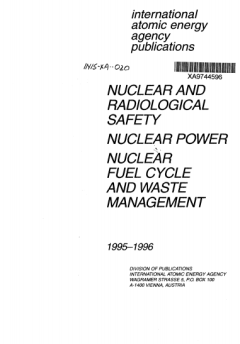
Nuclear and Radiological Safety, Nuclear Power, Nuclear Fuel Cycle and Waste …
This catalogue lists all sales publications of the International Atomic Energy Agency dealing with Nuclear and Radiological Safety, Nuclear Power and Nuclear Fuel Cycle and Waste Management and issued during the period of 1995-1996. Most publications are in English. Proceedings of conferences, symposia and panels of experts may contain some papers in languages other than English (Arabic, Chines…
- Edisi
- -
- ISBN/ISSN
- -
- Deskripsi Fisik
- -
- Judul Seri
- -
- No. Panggil
- 333.7924 IAE N
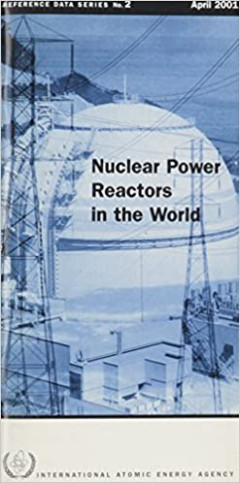
Nuclear Power Reactors in the World. April 2001 Edition
This is the twenty-first edition of Reference Data Series No. 2, which presents the most recent reactor data available to the Agency. It contains summarized information as of the end of 2000 on: (1) power reactors operating or under construction, and shut down; and (2) performance data on reactors operating in the Agency's Member States, as reported to the Agency. The information is collected b…
- Edisi
- -
- ISBN/ISSN
- -
- Deskripsi Fisik
- -
- Judul Seri
- Reference Data Series No. 2
- No. Panggil
- 621.483 IAE N
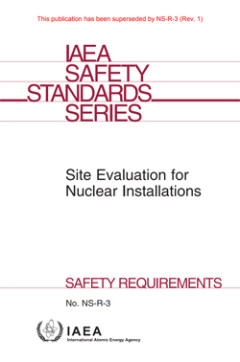
Site Evaluation for Nuclear Installations, Safety Requirements
This Safety Requirements publication was prepared under the IAEA programme on Safety Standards for Nuclear Installations. It establishes requirements and provides criteria for ensuring safety in site evaluation for nuclear installations. The Safety Guides on site evaluation listed in the references section provide recommendations on how to meet the requirements established in this Safety Requir…
- Edisi
- -
- ISBN/ISSN
- 9201124031 / 1020525X
- Deskripsi Fisik
- 28 p. : illus. ; 24 cm
- Judul Seri
- Safety Standards Series No. NS-R-3
- No. Panggil
- -
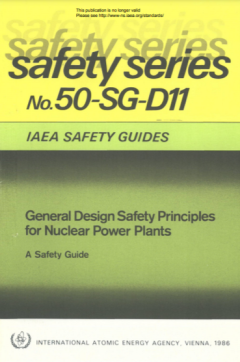
General Design Safety Principles for Nuclear Power Plants, A Safety Guide
This Safety Guide presents the safety principles and the approach underlying the design of nuclear pow er plants and identifies the relationship between the Code of Practice on Design for Safety of Nuclear Power Plants (IAEA Safety Series 50-C-D, hereafter referred to as the Code) and other Guides in the design. area of the NUSS Programme. It should be read as an elaboration of the safety princ…
- Edisi
- -
- ISBN/ISSN
- 9201236867
- Deskripsi Fisik
- 52 p. : Illus. ; 24 cm
- Judul Seri
- Safety Series No. 50-SG-D11
- No. Panggil
- 621.48 IAE g

Safety Reports Series No. 30: Accident Analysis for Nuclear Power Plants with…
The objective of this publication is to provide specific guidance for accident analysis for nuclear power plants with pressurized water reactors, taking into account the specific design features of these reactors. This guidance covers all steps required to perform such analyses, including selection of initiating events, acceptance criteria, computer codes, modelling assumptions, preparation of …
- Edisi
- -
- ISBN/ISSN
- 92-0-110603-3 / 1020-6450
- Deskripsi Fisik
- 65 p. : Illus. ; 24 cm
- Judul Seri
- Safety Reports Series
- No. Panggil
- -
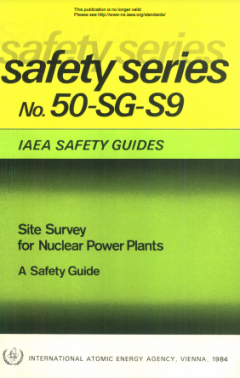
Safety Series No. 50–SG–S9: Site Survey for Nuclear Power Plants, A Safet…
This Guide describes the first stage of the siting process for nuclear power plants — the site survey, which involves the study and investigation of a large region to select one or more preferred candidate sites. Its purpose is to recommend procedures and provide information for use in implementing a part of the Code of Practice on Safety in Nuclear Power Plant Siting (IAEA Safety Series No. …
- Edisi
- -
- ISBN/ISSN
- 92-0-123884-3
- Deskripsi Fisik
- 48 p. : Illus. ; 24 cm
- Judul Seri
- Safety Guides
- No. Panggil
- 629.135 IAE s

Release of Sites from Regulatory Control on Termination of Practices, Safety …
An increasing number of nuclear facilities are coming to the end of their useful lives and are being, or are going to be, decommissioned with a view to removing the sites from regulatory control. In many cases, decommissioning activities include the decontamination of land, buildings and other structures such as underground pipes and tanks, or ponds, at the site that became contaminated as a re…
- Edisi
- -
- ISBN/ISSN
- 9201016069 / 1020525X
- Deskripsi Fisik
- 37 p. : Illus. ; 24 cm
- Judul Seri
- Safety Standards No. WS-G-5.1
- No. Panggil
- -
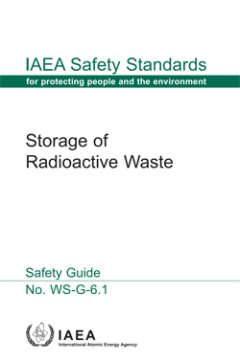
Storage of Radioactive Waste, Safety Guide
Radioactive waste is generated in a broad range of activities involving a wide variety of radioactive materials associated with, for example, the operation of nuclear facilities, the use of sealed radioactive sources in industry, the use of human made radionuclides in hospitals and laboratories, and the decommissioning of such facilities. The physical, chemical and radiological characteristics …
- Edisi
- -
- ISBN/ISSN
- 9201067062 / 1020525X
- Deskripsi Fisik
- 55 p. : Illus. ; 24 cm
- Judul Seri
- Safety Standards Series No. WS-G-6.1
- No. Panggil
- -
 Karya Umum
Karya Umum  Filsafat
Filsafat  Agama
Agama  Ilmu-ilmu Sosial
Ilmu-ilmu Sosial  Bahasa
Bahasa  Ilmu-ilmu Murni
Ilmu-ilmu Murni  Ilmu-ilmu Terapan
Ilmu-ilmu Terapan  Kesenian, Hiburan, dan Olahraga
Kesenian, Hiburan, dan Olahraga  Kesusastraan
Kesusastraan  Geografi dan Sejarah
Geografi dan Sejarah